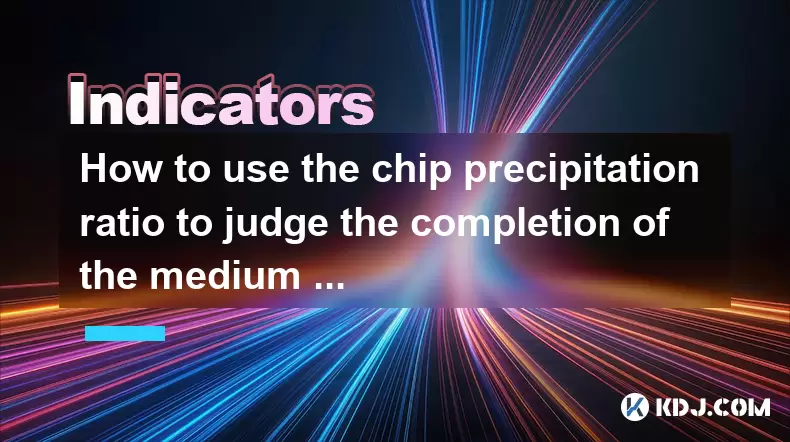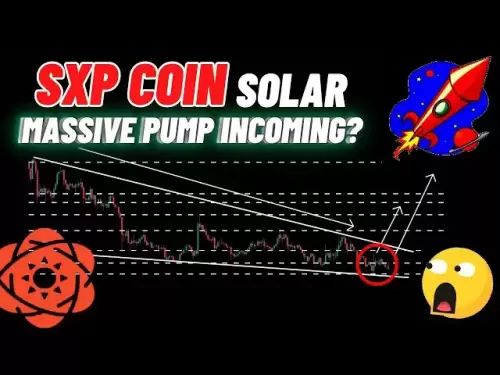-
 Bitcoin
Bitcoin $117500
2.04% -
 Ethereum
Ethereum $3759
3.02% -
 XRP
XRP $3.171
3.30% -
 Tether USDt
Tether USDt $1.000
0.03% -
 BNB
BNB $782.4
2.52% -
 Solana
Solana $187.2
5.62% -
 USDC
USDC $0.0000
0.02% -
 Dogecoin
Dogecoin $0.2380
5.26% -
 TRON
TRON $0.3175
1.07% -
 Cardano
Cardano $0.8227
4.03% -
 Hyperliquid
Hyperliquid $44.50
5.44% -
 Sui
Sui $4.020
10.07% -
 Stellar
Stellar $0.4396
6.28% -
 Chainlink
Chainlink $18.32
4.55% -
 Hedera
Hedera $0.2628
10.71% -
 Bitcoin Cash
Bitcoin Cash $554.8
4.90% -
 Avalanche
Avalanche $24.20
4.60% -
 Litecoin
Litecoin $113.7
2.31% -
 Shiba Inu
Shiba Inu $0.00001413
5.99% -
 UNUS SED LEO
UNUS SED LEO $8.984
0.11% -
 Toncoin
Toncoin $3.326
7.22% -
 Ethena USDe
Ethena USDe $1.001
0.00% -
 Uniswap
Uniswap $10.49
4.56% -
 Polkadot
Polkadot $4.092
4.02% -
 Monero
Monero $326.6
1.30% -
 Dai
Dai $1.000
-0.01% -
 Bitget Token
Bitget Token $4.570
2.49% -
 Pepe
Pepe $0.00001267
5.10% -
 Aave
Aave $297.3
3.10% -
 Cronos
Cronos $0.1344
4.10%
How to use the chip precipitation ratio to judge the completion of the medium and long-term bottom construction?
The chip precipitation ratio helps investors assess chip accumulation at various price levels, aiding in identifying medium and long-term bottom formations in the crypto market.
Jun 04, 2025 at 03:36 am

The chip precipitation ratio is a crucial metric used by investors to assess the accumulation of chips (or shares) at different price levels over time. This ratio helps in understanding the distribution of chips and can be a powerful tool for determining the completion of medium and long-term bottom construction in the cryptocurrency market. By analyzing the chip precipitation ratio, investors can gain insights into the market's sentiment and make informed decisions about entry and exit points.
Understanding Chip Precipitation Ratio
The chip precipitation ratio is essentially a measure of the percentage of chips that have been held for a certain period without being traded. It reflects the stability and confidence of investors in holding their positions. A high chip precipitation ratio indicates that a significant portion of the chips has been held for a long time, suggesting strong investor confidence and potential bottom formation.
To calculate the chip precipitation ratio, one typically uses trading data to determine how long chips have been held without being sold. This data is often visualized using a chip distribution chart, where different colors represent different holding periods. The ratio can be calculated for various time frames, such as 5 days, 10 days, 30 days, or even longer, depending on the analysis needed.
Importance of Chip Precipitation Ratio in Bottom Construction
In the context of medium and long-term bottom construction, the chip precipitation ratio serves as a vital indicator. When a cryptocurrency experiences a significant decline, the ratio can help identify whether the bottom has been reached and whether the market is beginning to stabilize.
A rising chip precipitation ratio over time suggests that more chips are being held without being sold, indicating that investors are accumulating rather than liquidating their positions. This accumulation is a strong sign that the market may be forming a bottom. Conversely, a declining chip precipitation ratio indicates that chips are being sold off quickly, suggesting ongoing bearish sentiment and potential further declines.
Using Chip Precipitation Ratio to Identify Bottoms
To use the chip precipitation ratio effectively in identifying the completion of medium and long-term bottom construction, investors should follow a systematic approach. Here's how you can do it:
Analyze Historical Data: Start by looking at the historical data of the chip precipitation ratio for the cryptocurrency in question. Identify periods where the ratio has significantly increased after a decline, as these could indicate past bottom formations.
Monitor Current Trends: Keep a close eye on the current trends in the chip precipitation ratio. A consistent increase in the ratio over several weeks or months can be a strong signal that the market is stabilizing and a bottom is forming.
Compare with Price Movements: Correlate the chip precipitation ratio with price movements. A rising ratio alongside a stabilizing or slightly increasing price can confirm that the bottom is in place.
Use Additional Indicators: While the chip precipitation ratio is a powerful tool, it should not be used in isolation. Combine it with other technical indicators such as moving averages, RSI, and MACD to get a more comprehensive view of the market.
Case Study: Applying Chip Precipitation Ratio to Bitcoin
Let's take a practical example of how the chip precipitation ratio can be applied to Bitcoin (BTC) to judge the completion of medium and long-term bottom construction.
In early 2020, Bitcoin experienced a significant decline, reaching a low of around $3,800. During this period, the chip precipitation ratio for chips held over 30 days began to rise steadily. By mid-2020, the ratio had increased significantly, indicating that a large number of investors were holding onto their BTC despite the price drop.
This rising ratio, coupled with a gradual increase in Bitcoin's price, suggested that the market was beginning to form a bottom. Investors who recognized this trend could have used it as a signal to start accumulating Bitcoin, leading to potential profits as the price eventually rebounded.
Practical Steps to Use Chip Precipitation Ratio
For investors looking to use the chip precipitation ratio to make informed decisions, here are some practical steps to follow:
Access Reliable Data: Ensure you have access to reliable data sources that provide accurate chip precipitation ratios. Many cryptocurrency analysis platforms offer this data, often in the form of charts and tables.
Set Up Alerts: Set up alerts for significant changes in the chip precipitation ratio. This can help you stay informed about potential bottom formations without constantly monitoring the market.
Backtest Your Strategy: Before applying the chip precipitation ratio in real-time trading, backtest your strategy using historical data. This will help you understand how well the ratio has predicted past bottom formations and adjust your approach accordingly.
Combine with Fundamental Analysis: While the chip precipitation ratio is a technical indicator, combining it with fundamental analysis can provide a more robust investment strategy. Look at factors such as network growth, adoption rates, and regulatory developments to complement your technical analysis.
Stay Patient and Disciplined: Using the chip precipitation ratio to identify bottom formations requires patience and discipline. Avoid making impulsive decisions based on short-term fluctuations and focus on the long-term trend of the ratio.
Frequently Asked Questions
Q: Can the chip precipitation ratio be used for short-term trading?
A: While the chip precipitation ratio is primarily used for medium and long-term analysis, it can also provide insights into short-term market sentiment. However, for short-term trading, it is often more effective to combine the ratio with other technical indicators that are more sensitive to short-term price movements.
Q: How frequently should I check the chip precipitation ratio?
A: The frequency of checking the chip precipitation ratio depends on your investment horizon. For medium and long-term investors, checking the ratio weekly or monthly may be sufficient. For those interested in shorter time frames, daily or even intraday monitoring might be necessary.
Q: Is the chip precipitation ratio applicable to all cryptocurrencies?
A: The chip precipitation ratio can be applied to any cryptocurrency with sufficient trading data. However, its effectiveness may vary depending on the liquidity and trading volume of the cryptocurrency. For less liquid assets, the ratio might be less reliable due to limited data.
Q: Can the chip precipitation ratio be manipulated by large investors?
A: While it is possible for large investors to influence the chip precipitation ratio by holding or selling large volumes of chips, the ratio is generally a reflection of the broader market sentiment. It is less susceptible to manipulation than other indicators that are more directly influenced by trading volume and price.
Disclaimer:info@kdj.com
The information provided is not trading advice. kdj.com does not assume any responsibility for any investments made based on the information provided in this article. Cryptocurrencies are highly volatile and it is highly recommended that you invest with caution after thorough research!
If you believe that the content used on this website infringes your copyright, please contact us immediately (info@kdj.com) and we will delete it promptly.
- Vaultz Capital's Bitcoin Bet: A Strategic Shift on the Aquis Exchange
- 2025-07-26 20:30:12
- Pi Coin, Wallet Features, and Coinbase: What's the Buzz?
- 2025-07-26 18:30:12
- Worldcoin, Punisher Coin, and the Meme Coin Mania: What's the Haps?
- 2025-07-26 18:30:12
- Conviction, Justice System, and Murders: A Look at Recent Cases and Shifting Perspectives
- 2025-07-26 18:50:11
- Shiba Inu, Remittix, and the Market Surge: What's the Hype?
- 2025-07-26 19:10:12
- Cardano Price, ADA Holders, and Leadership Criticism: What's the Real Deal?
- 2025-07-26 19:30:12
Related knowledge

What does it mean that the rebound is blocked after the moving average is arranged in a short position for the first time?
Jul 26,2025 at 10:51am
Understanding the Short-Term Moving Average ConfigurationWhen traders refer to a 'short position arrangement' in moving averages, they are describing ...

What does it mean that the parabolic indicator and the price break through the previous high at the same time?
Jul 26,2025 at 07:22pm
Understanding the Parabolic Indicator (SAR)The Parabolic SAR (Stop and Reverse) is a technical analysis tool developed by J. Welles Wilder to identify...

What does it mean when the price rises along the 5-day moving average for five consecutive days?
Jul 26,2025 at 08:07am
Understanding the 5-Day Moving Average in Cryptocurrency TradingThe 5-day moving average (5DMA) is a widely used technical indicator in cryptocurrency...

What does it mean when ADX breaks through 25 and +DI continues to rise?
Jul 26,2025 at 07:00pm
Understanding the ADX Indicator and Its ThresholdsThe Average Directional Index (ADX) is a technical analysis tool used to measure the strength of a t...

What does it mean when the price breaks through the 60-day moving average with a large volume but shrinks the next day?
Jul 26,2025 at 06:01am
Understanding the 60-Day Moving Average in Cryptocurrency TradingThe 60-day moving average (60DMA) is a widely used technical indicator in the cryptoc...

What does the sudden rise of ADX in DMI accompanied by +DI crossing -DI indicate?
Jul 26,2025 at 01:21pm
Understanding the DMI and Its Core ComponentsThe Directional Movement Index (DMI) is a technical analysis tool used to determine the presence and stre...

What does it mean that the rebound is blocked after the moving average is arranged in a short position for the first time?
Jul 26,2025 at 10:51am
Understanding the Short-Term Moving Average ConfigurationWhen traders refer to a 'short position arrangement' in moving averages, they are describing ...

What does it mean that the parabolic indicator and the price break through the previous high at the same time?
Jul 26,2025 at 07:22pm
Understanding the Parabolic Indicator (SAR)The Parabolic SAR (Stop and Reverse) is a technical analysis tool developed by J. Welles Wilder to identify...

What does it mean when the price rises along the 5-day moving average for five consecutive days?
Jul 26,2025 at 08:07am
Understanding the 5-Day Moving Average in Cryptocurrency TradingThe 5-day moving average (5DMA) is a widely used technical indicator in cryptocurrency...

What does it mean when ADX breaks through 25 and +DI continues to rise?
Jul 26,2025 at 07:00pm
Understanding the ADX Indicator and Its ThresholdsThe Average Directional Index (ADX) is a technical analysis tool used to measure the strength of a t...

What does it mean when the price breaks through the 60-day moving average with a large volume but shrinks the next day?
Jul 26,2025 at 06:01am
Understanding the 60-Day Moving Average in Cryptocurrency TradingThe 60-day moving average (60DMA) is a widely used technical indicator in the cryptoc...

What does the sudden rise of ADX in DMI accompanied by +DI crossing -DI indicate?
Jul 26,2025 at 01:21pm
Understanding the DMI and Its Core ComponentsThe Directional Movement Index (DMI) is a technical analysis tool used to determine the presence and stre...
See all articles

























































































